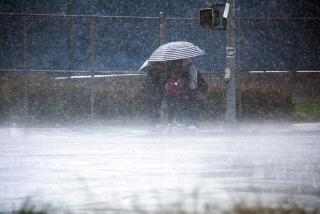‘A wing and a prayer.’ Financial crisis has Catholic schools struggling to serve low-income students
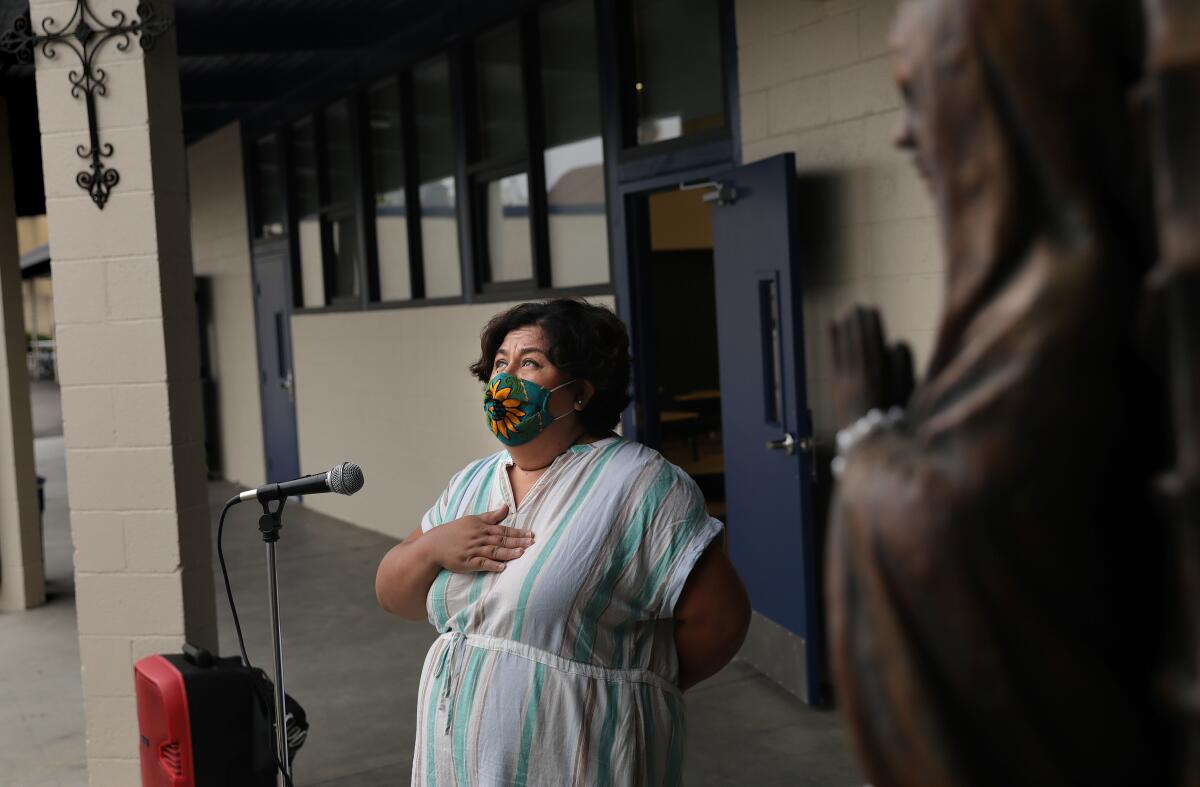
- Share via
It’s been a year of deep losses at St. Joseph Elementary School in La Puente.
Thirty students, or about 16% of the student body, did not show up in the fall, costing the school tens of thousands of dollars in tuition. Four employees were laid off. One of the school’s fundraising pillars, the annual jog-a-thon, was cancelled due to coronavirus restrictions.
“Finances are tight, but we’re doing our best and are proud our community has not turned its back on us,” St. Joseph Principal Luis Hayes said. “We believe better days are ahead.”
Hayes has been hoping that the school’s partial reopening under a county-approved waiver will prompt families to return. By late December only three had re-enrolled.
St. Joseph’s circumstances are emblematic of the plunging enrollment and hobbled fundraising that threaten the future of many schools in the Roman Catholic Archdiocese of Los Angeles, one of the largest private educational systems in the nation. Although many Catholic schools long have struggled with dropping enrollment, pandemic-induced family hardships and financial strain have accelerated the decline.
Three schools have already closed this school year: St. John Paul II STEM Academy in Burbank, St. Anthony of El Segundo and All Saints of El Sereno elementary schools, while others say they’re on the brink.
Elementary schools like Resurrection in Boyle Heights, Our Lady of the Rosary in Paramount and St. Maria Goretti in Long Beach have publicized $50,000 GoFundMe campaigns asking for help to stay open.
“What we’re facing, what our families are facing are tremendous odds,” archdiocese Supt. Paul Escala said of the 262 elementary and high school campuses across Los Angeles, Ventura and Santa Barbara counties. A majority of the elementary school students come from low-income families who receive scholarships to pay for tuition that generally ranges from $3,000 to $5,000 a year, with a handful of schools charging more.
August numbers showed that overall, enrollment dropped in the fall by 7,195 students, an unprecedented decline of nearly 10%. This includes 995 students at the high school level, leaving an archdiocese-wide enrollment of roughly 66,000.
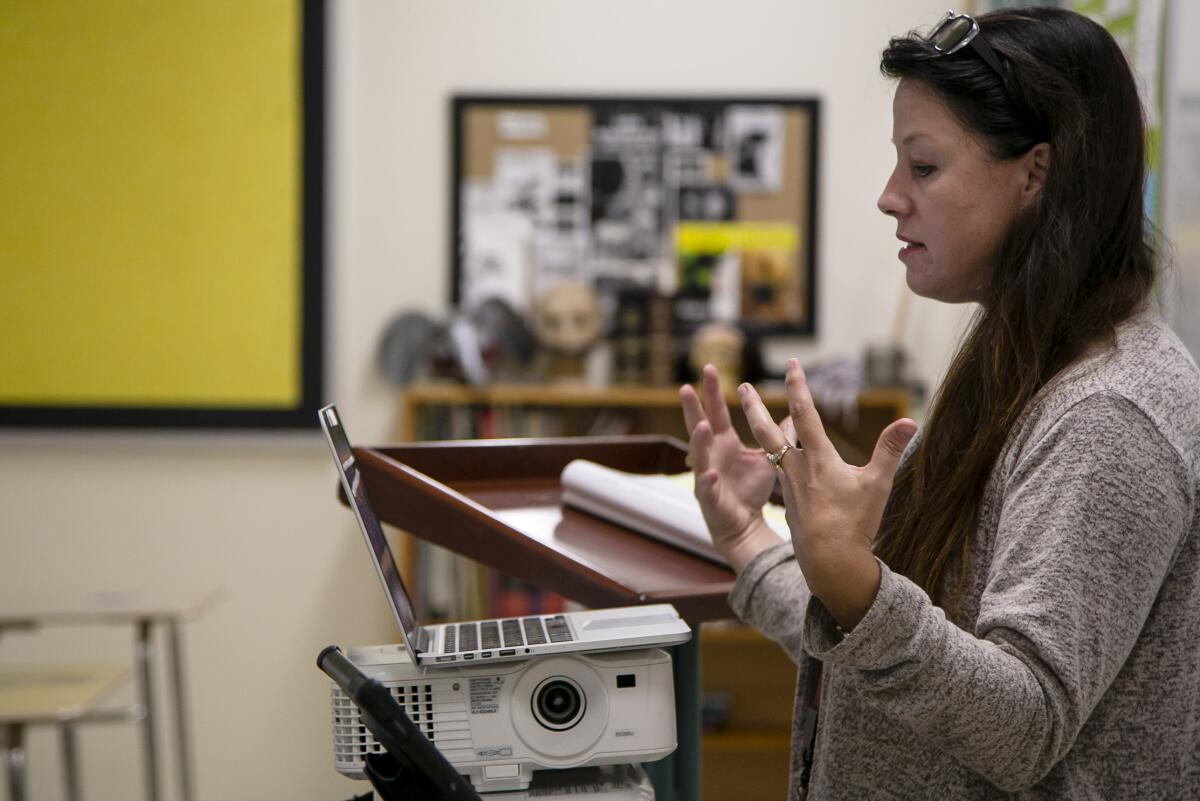
Because of their smaller size, parish-based operations and lack of teachers union influence, many Catholic schools have been able to take advantage of waivers and partial reopening rules that allow K-12 campuses to bring back up to 25% of their students.
Like Hayes, Escala hopes that the partial reopenings will incentivize families who desire a faith-based education to return. Yet to date, the numbers are minimal.
In Los Angeles County, 63 elementary schools received waivers as of Dec. 21, with several others set to partially reopen in January. All six of Santa Barbara County’s elementary campuses and its one stand-alone Catholic high school reopened for in-person learning, while six elementary schools and two high schools in Ventura County also opened.
There have been bright spots: Serra High School in Gardena, Bishop Conaty-Our Lady of Loretto High School in Los Angeles and St. Bernard High School in Playa Del Rey all saw enrollment jumps of 5% to 9% this semester.
But the systemwide plunge far eclipses the approximately 3% drop during the previous two school years combined. The coronavirus-induced drop comes on top of bruising declines during the Great Recession years, when Catholic schools lost 7,909 students, or 8.93% from 2008 to 2010.
Escala and many principals throughout the archdiocese said they have expended reserves and relied heavily on PPP loans to keep them afloat this school year. Although the new stimulus bill provides another round of PPP loans and unemployment benefits that could aid Catholic schools and their laid-off employees, it does not provide any special financial assistance as requested last August by the United States Conference of Catholic Bishops, led by Los Angeles Archbishop José Gómez.
“The pandemic hasn’t created a crisis for Catholic schools; it has exacerbated one,” said Sister Rosemarie Nassif, executive director for the Center of Catholic Education at Loyola Marymount University. “Catholic Schools have been facing the same three problems since about the 1960s.”
Brothers, sisters and priests — who once constituted 98% of school faculty nationally and worked for small stipends — now make up only 2%, Nassif said. They were replaced by lay staff who expect better pay and benefits. Nassif also highlighted the move of wealthier and middle-income Catholic families to the suburbs. More recently, the growth of charter schools has also siphoned away students.
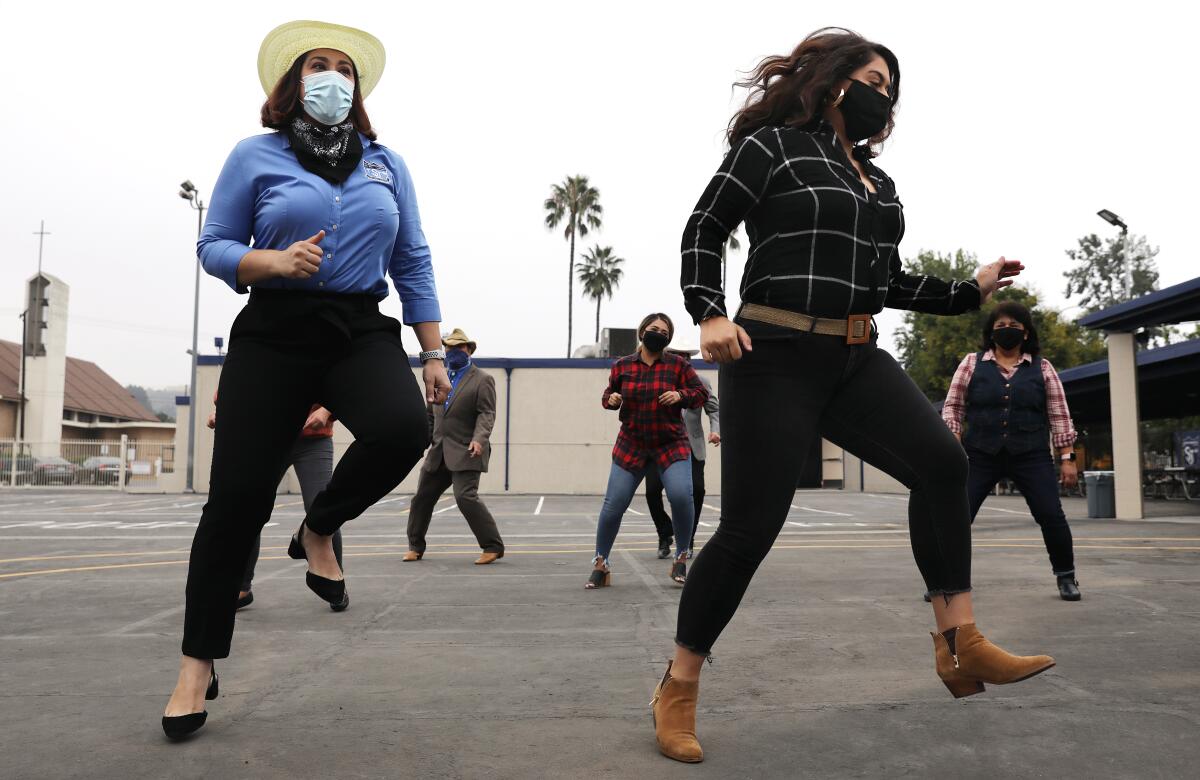
While church attendance declines nationally, and the Los Angeles Archdiocese has been embroiled in sex abuse scandals for over a decade, Escala said few parents have brought up either issue in discussing why they pulled their children from school.
“It almost always comes down to affordability,” he said, noting that one in six students at archdiocese schools are non-Catholic and attend because of the “strong reputation of excellent schooling.”
The coronavirus has intensified financial hardships, child-care issues and learning concerns for many families in a system that serves 78% students of color and 70% low-income students.
The family of 5-year-old Nolan Morales had a plan last summer. The child would attend St. Joseph’s, where his grandparents are parishioners, and they would care for him after school until his parents got home from work.
But with no guarantee he would be among those allowed on campus and leery of online learning, Nolan’s parents instead enrolled him in a school camp in Walnut. Camps and day-care centers are allowed to remain open.
“Everything is being pushed back a year,” said Yoshi McNealy, the boy’s grandmother.
Vendors, gig workers, contractors and hospitality employees — a large portion of school parents — have pulled their children out due to lost jobs or slashed wages. Many who kept their children enrolled are asking for more financial aid, computers and internet access.
At the same time, fundraising galas, golf tournaments, festivals and bingo — moneymakers schools rely upon — were scrapped due to the shutdown. And virtual fundraisers tend to fall short.
“It’s a little scary. We have some families attending that have absolutely no income.”
— Raymond Saborio, principal at Sacred Heart High School in Lincoln Heights.
Even archdiocese-driven campaigns, such as “Together in Mission,” which earned $30 million for poorer parishes and schools last year, have been impacted, Escala said. He anticipates major declines in donations this year, but could not give an exact figure with the campaign ongoing.
Unexpected expenses for online devices and personal protective equipment have some high schools fearing closure.
“It’s a little scary,” said Raymond Saborio, principal at Sacred Heart High in Lincoln Heights, an all-girls school that currently has 283 students — with 70% of the families living below the poverty line and 98% on financial aid.
“We have some families attending that have absolutely no income,” Saborio said, adding that the average family contributes about $2,500 of the $7,500 annual tuition. The school and foundations kicked in $1.4 million in assistance last year.
In the archdiocese, 46 of its 50 high schools received a PPP loan, ranging from $150,000 to $5 million, according to ProPublica’s “Coronavirus Bailout” database. The low-interest program, which ended Aug. 8, was intended to maintain payroll and staffing.
At Paraclete High School in Lancaster, most students come from middle-income and working-class families and receive financial assistance for tuition that ranges from $8,100 to $9,700.
“We had something like 40 parents of 50 to 60 students lose their jobs, and we’ve had to fill in and keep these kids in school,” said Principal John Anson. “Like all Catholic schools, we’re surviving on a wing and a prayer. … If we’re in the same place this time next year, oh boy.”
Bishop Conaty Loretto, an all-girls school in the Pico-Union District, maintained its 32-member staff through a PPP loan. The school also purchased 200 iPads and some Wi-Fi cards for online learning, which put a dent in its reserves, though the school is not in danger of closing, according to its principal.
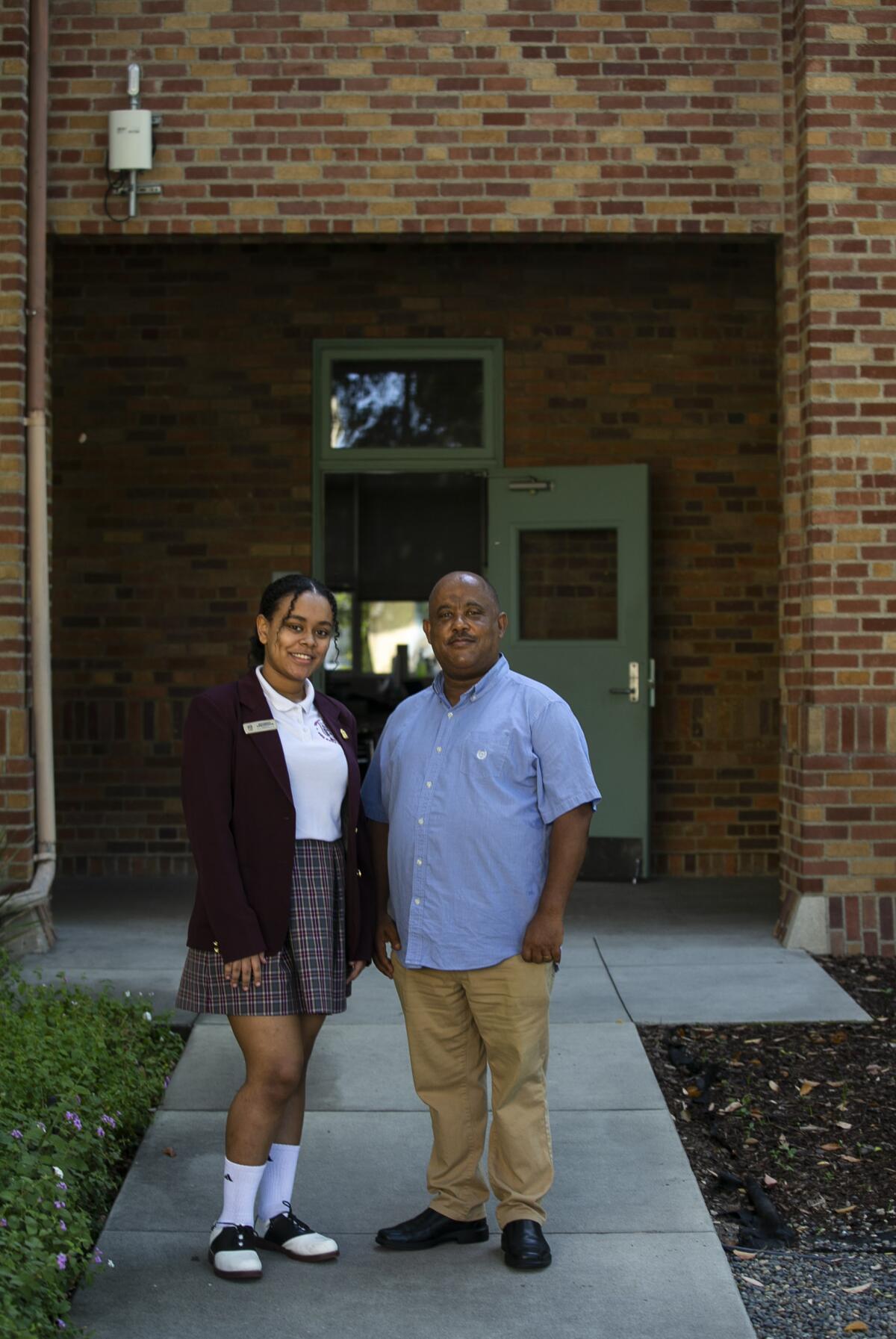
Demoz Abraham appreciated the school’s help.
The 53-year-old Inglewood resident, who drives for Uber, saw his income wiped out as his daughter Leah, 16, was entering her junior year. The school extended more financial aid, along with assurances it would work to keep Leah enrolled. “It feels good to know they understand,” Abraham said.
Bishop Conaty, whose students are 89% Latina, 4.4% multiracial and 2.6% black, charges $8,040 in tuition. But nearly all the girls receive financial aid, with 72% being subsidized by the Catholic Education Foundation, according to principal Andrea Jenoff.
Cathedral High President Martin Farfan said his 620-student, all-boys school located near Dodger Stadium has paid $30,000 for masks, sanitizing machines and temporal thermometers.
“We’re not doing great financially, but we’re surviving,” said Farfan, who is worried about the future after the school cancelled its annual winter scholarship dinner, which typically raises about $200,000. Cathedral charges $11,300 per student and was receiving $4 million in financial aid from various foundations pre-pandemic, according to Farfan.
While there is fear, Nassif said, there is also room for hope in the form of lessons Catholic administrators and teachers are learning during the pandemic: the need to network across schools, build community and acknowledge the social-emotional learning schools provide.
“What I see is a big Catholic community of 6,200 schools nationwide learning how to struggle, grow and survive together,” Nassif said. “Principals are reaching out to students and parents, teachers are connecting with each other and learning best practices, and communities are doing their best to stick together.”
More to Read
Sign up for Essential California
The most important California stories and recommendations in your inbox every morning.
You may occasionally receive promotional content from the Los Angeles Times.


